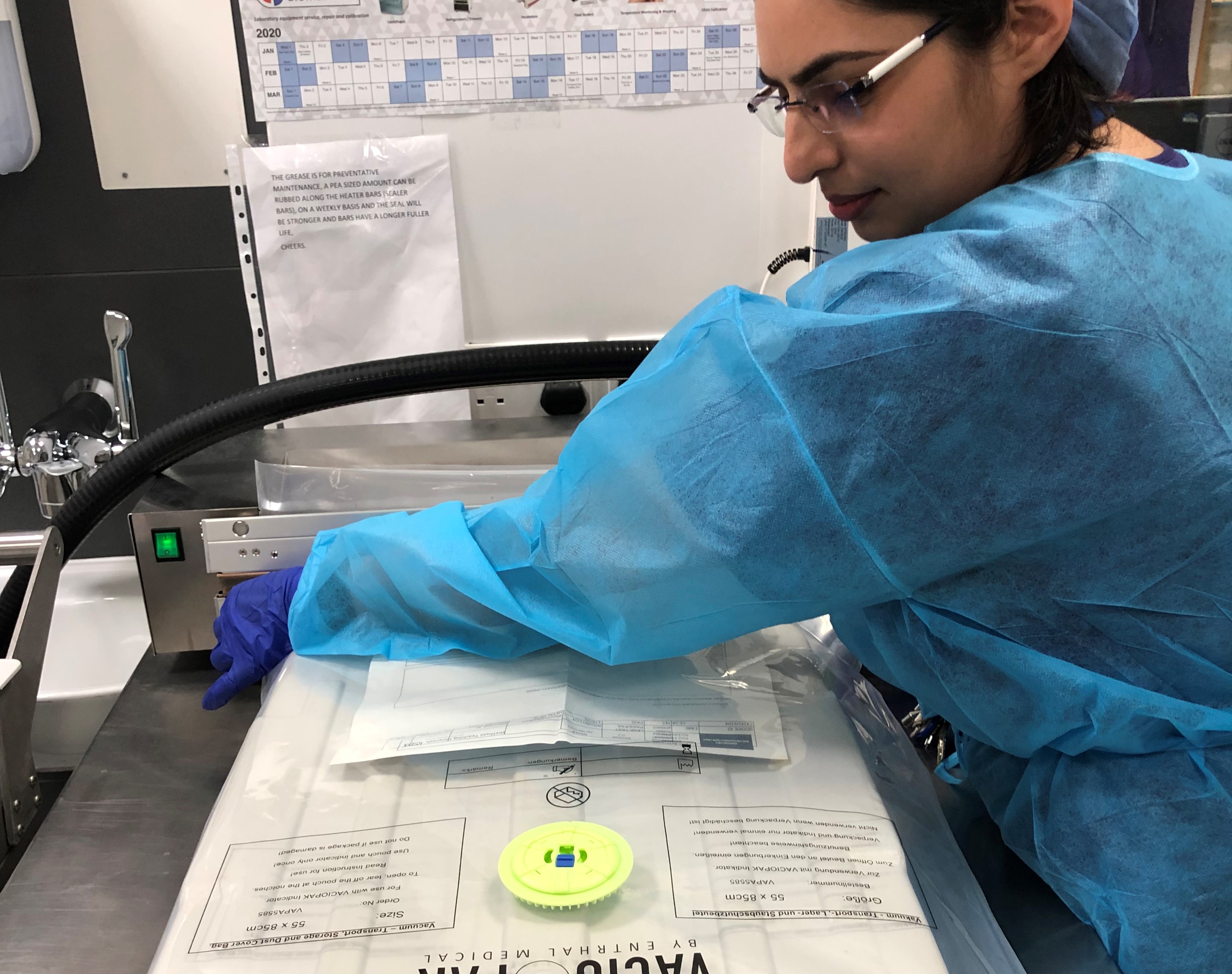Resolving endoscope storage issues, and saving money along the way

In the current financial environment, to dispense with recurring problems, while at the same time saving money (rather than spending more), sounds too good to be true. But that’s precisely what Tess Kemp, Endoscopy Decontamination Manager, has been able to do at Sheffield Teaching Hospitals NHS Trust. Through the introduction of VacioPak for Endoscopy, her departments have achieved significant financial savings every year, and have been able to increase the availability of scopes to clinicians.
The endoscopy decontamination units at the Royal Hallamshire Hospital and the Northern General Hospital also perform processing work for other sites as a contingency (i.e. on an ad-hoc basis). They process around 3,500 scopes a month from across the two sites, and use VacioPak for Endoscopy on about 30% of their scopes. The site uses a variety of makes of automated endoscopy reprocessors (AERs) and driers – which has not been a problem, since VacioPak for Endoscopy can be applied independently of the ranges of processing equipment that a hospital may use.
Challenges and recurring problems
The British Society for Gastroenterology (BSG) guidelines (see also the Department of Health and Social Care’s Health Technical Memorandum (HTM 01-06 part C)) require that a scope is to be used within three hours once it has left its drying cabinet or storage cabinet. This requirement causes operational challenges for hospitals up and down the country as, to meet this need, they often run additional drying cabinets for storage or purchase additional separate cabinets for storage of the dried scopes.
This all requires extra space and expenditure: the purchase cost of an EN 16442-compliant drying and/or storage cabinet is approximately £20,000 to £30,000, and the running, maintenance, and validation costs are usually in the region of £3,500 – £4,000 per cabinet, per year.
Some hospitals don’t run a processing department seven days a week, and for them the 3-hour requirement makes coping with weekends even more challenging. Enough scopes need to be in their drying or storage cabinets, ready for use, and there needs to be enough further scopes on stand-by to cover further possible usage needs, contingent on how soon they can next be processed through the washer-disinfectors. This ties up further financial resources in extra scopes.
Saving space and costs
VacioPak for Endoscopy is a storage system that allows a dried scope to be available when needed, without occupying space in an expensive drier or storage cabinet. VacioPak for Endoscopy is a vacuum sealing system that isolates and protects the scope within its transport tray.
The process is verified through the BESTest, a protocol that allows processing departments to test the quality of their complete process from the point of the scope’s admission to the AER. This encompasses the process of: disinfection, rinse, transfer, drying, and storage – with options of testing live scopes, bacteria loaded surrogate devices, or biofilm loaded surrogate devices – depending on the requirements of the customer.
There are standard separate AER and drier/storage cabinet testing protocols (ISO 15883-4 and EN 16442), but the BESTest is the only one which covers the whole process through both pieces of equipment (independent of manufacturer), and then through to the end of the storage element, thereby ensuring improved patient safety.
That the entire process is monitored ensures that AERs are properly cleaning and disinfecting scopes, and that the driers are drying them fully. We should always be working on the practice that neither a ‘dirty’ nor incompletely dried scope destined for patient use, should ever be stored within any system.
The BESTest is also used to confirm that scopes stored within vacuumed pouches can be stored for the length of time the customer requires, without any microbiological growth. BES Healthcare has tested this with various customers for up to 28 days – showing that scopes had no increase in microbial contamination as compared with when they were put into the pouches.
The main cost savings
- Having less drying/storage cabinets with their attendant space, running, maintenance, and validation costs
- Unused scopes no longer need to be processed again when stored for longer than three hours outside their drier/storage cabinets, reducing the wear and tear on the scopes and their maintenance costs
- Fewer reprocessing cycles also saves on running costs and increases capacity
Driving real improvements for hospitals
VacioPak for Endoscopy ensures scopes are available as needed, allowing processing departments to plan for the following day and prepare scopes the day before, meaning less stress and out of hours work.
The tray liners used in the VacioPak for Endoscopy process are far more user friendly for containing the bioburden within trays in which scopes are returned to the processing units. The gentle vacuum used in this process helps to hold scopes in place, thereby protecting against “rough handling” of scopes that can happen during transfer between sites.
“The staff were very reluctant at first when the Vaciopak was introduced as they thought it was just another gimmick” said Tess Kemp, “however, now they can see the benefits of how easy it is to use, and how it saves collection and reprocessing of unused scopes. They are continually looking at other areas that could benefit from the service. If (the unit) breaks down, which it very rarely does, an engineer is on site the same or next day.
“In my opinion it has reduced cost and time in so many areas as listed above and has helped to improve the Service we provide to our Service Users.”
For more information on VacioPak for Endoscopy and the BESTest validation, contact BES Healthcare Ltd on 01179 666 761, or email the team at info@beshealthcare.net
Please note that the views stated above are that of Tess Kemp, not the STH Trust.
